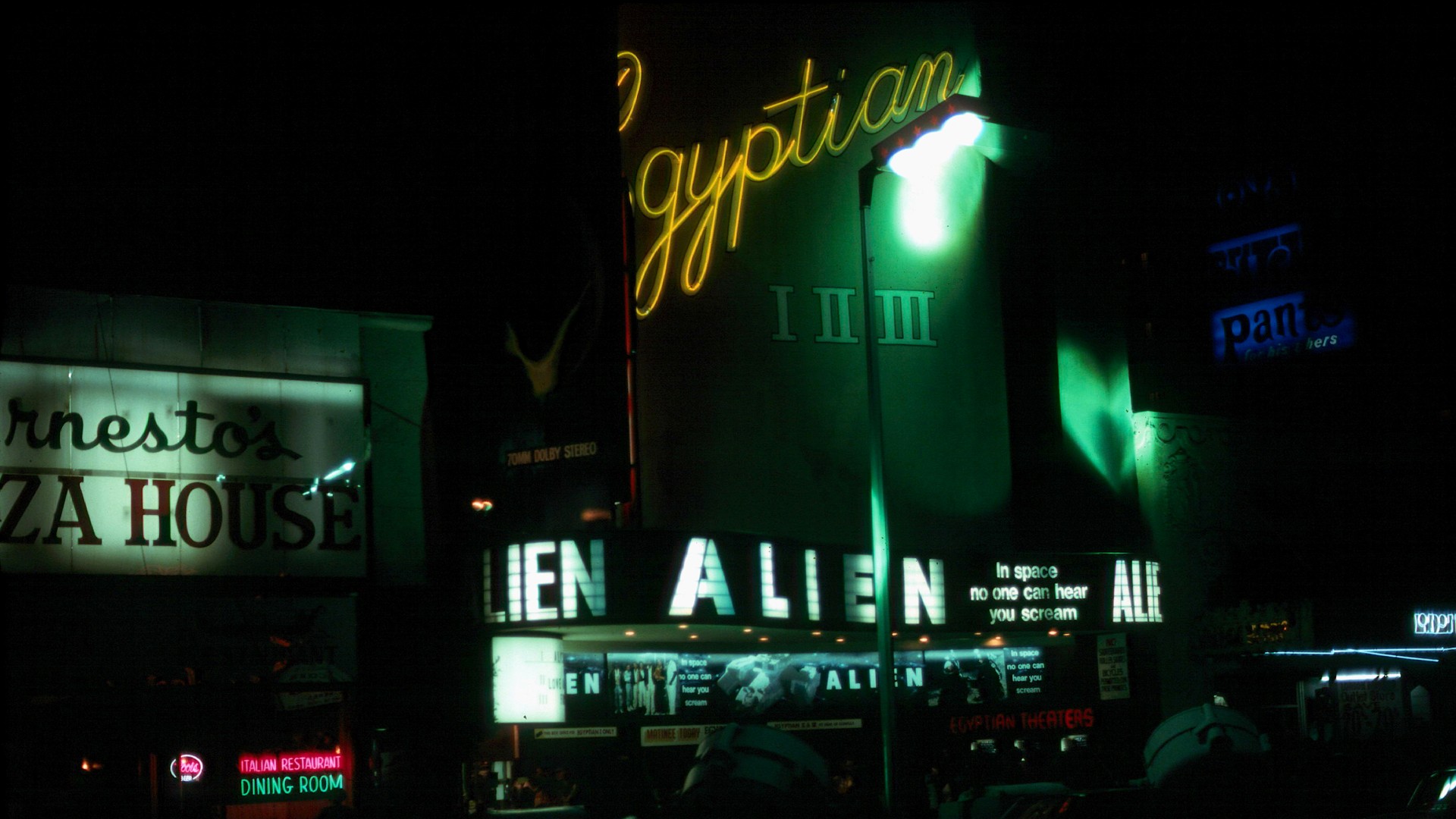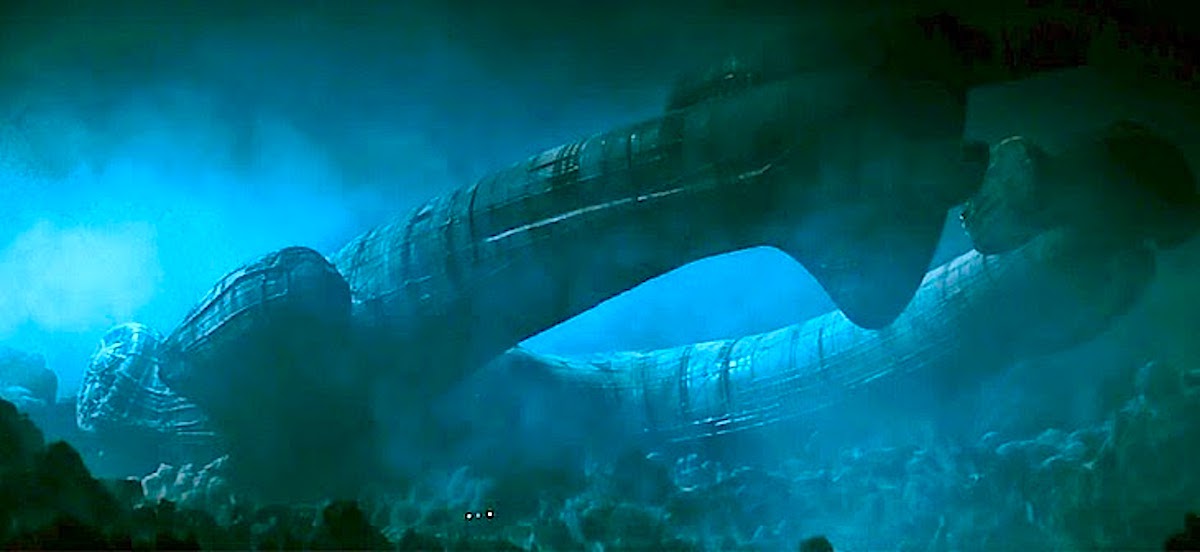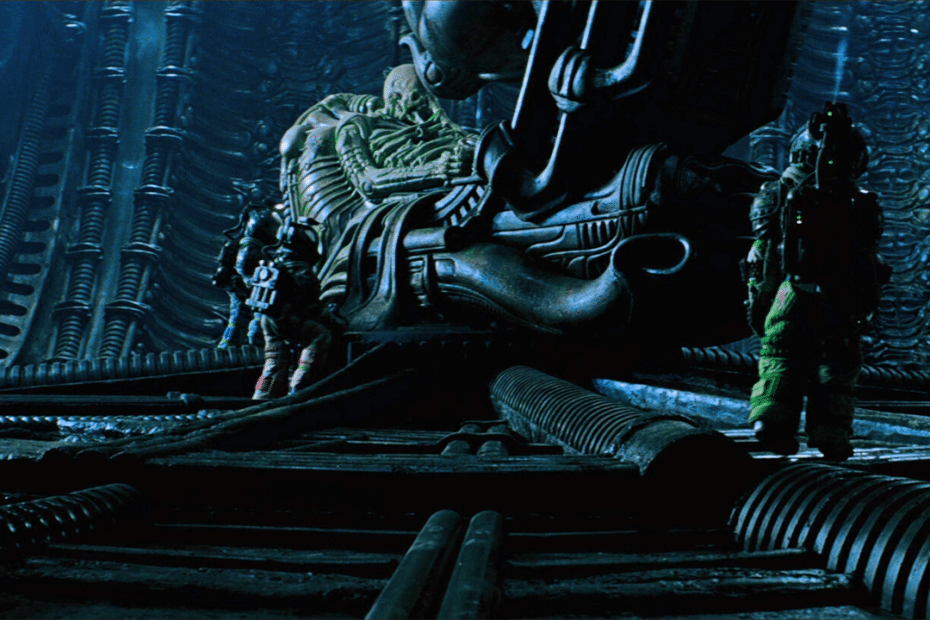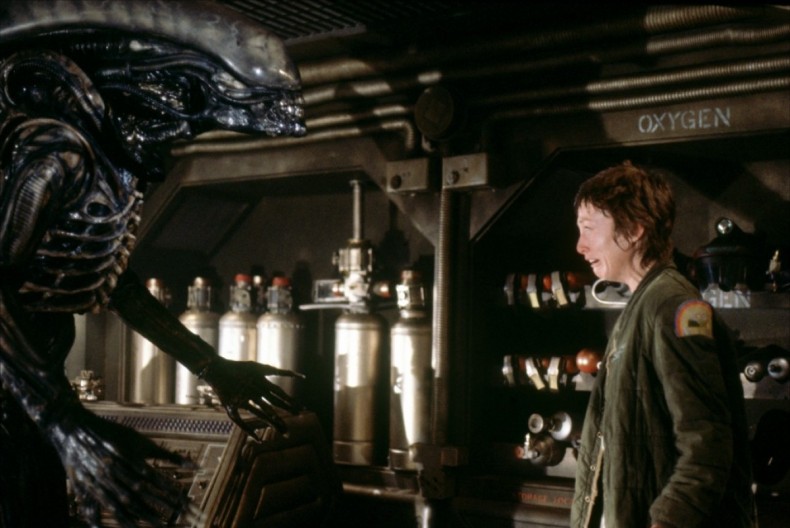'Alien' heard us all scream 45 years ago today. Here's what it was like on opening day

"Alien," that most exalted and respected of all science fiction films, celebrates its 45th birthday today and as one of the most mulled over cinematic experiences in history, its legacy of abject terror still resonates today just as fiercely as when it was unleashed in theaters by 20th Century Fox on May 25, 1979.
Can no one really hear you scream in the vacuum of space? Scientists will tell you it's true and reveal elemental facts and theorems to support the claim. However, if you happened to be a hippie-haired, 13-year-old "Star Wars" fanatic standing in a two-block-long line with your parents at San Francisco's Northpoint Theatre to see "Alien," a mysterious new science-fiction movie opening Memorial Day weekend, those loud exaltations shot out towards the Zeta 2 Reticuli star system and beyond.
But it's nearly impossible to imagine what it was truly like back in the day, stripped of the festering brew of hype and hyperbole that accompanies every Hollywood release in the social media age. Never before had the genre been tackled with such style and sophistication, and its grimy space truckers vibe infused with a simmering '70s sexuality gave the project an edgy real-world foundation from which to launch into more familiar "monster in a haunted house" movie tropes.
Related: Alien movies in order: chronological and release
Whispers of this shadowy project and its elaborate British production first filtered out in the summer of '78 when rumors rose of a cool movie about a doomed space mission and a stowaway alien beast. These precious news nuggets were mined from coveted fanzines like Starlog and Cinefantastique, poking from pockets of many a nerdy Bay Area kid, read in between Round Table pizza runs and Saturday afternoon treks to Talbot's Toys and Hobbies for fresh packs of Estes rocket engines or miniature bottles of Testors paint to finish off that Revell airplane model.
Who can deny hearing the strident chords of Jerry Goldsmith's ominous score in the shocking R-Rated trailer, or seeing the teaser poster with its simple "In Space No One Can Hear You Scream" tagline? Months before release, our Belmont Theater displayed a vivid set of 11-by-14 inch lobby cards hinting at the claustrophobic confines of the Nostromo, its blue collar crew, the exterior of a derelict spaceship, and astronauts climbing up onto the petrified Space Jockey.
Nearly all 91 U.S. engagements for "Alien's" original theatrical release were in the deluxe 70mm format accompanied by multi-channel stereo sound. San Francisco's premiere single-screen movie palace, the Northpoint Theatre, received the finest of all treatments with its prestige format 70mm Six-Track Dolby Stereo presentation. This was the only venue in the entire region that was bestowed the honor of screening "Alien!" It was a glorious time to be a cinephile.
Breaking space news, the latest updates on rocket launches, skywatching events and more!
Besides the jolting reveal of the Space Jockey, it was perhaps the chestburster scene, inspired by parasitoid wasps of the American southwest, that provided the biggest reactions. That moment was greeted with a suffocating cacophony of screams, gasps, giggles, nervous snorts, and stunned silence. Most patrons were caught totally off-guard with a mid-mouthful of popcorn, not fully registering what they’d witnessed, much like the astonished Nostromo crew themselves.
Sir Ridley Scott's "Alien" was a revolutionary endeavor in ways that are still reverberating throughout the horror and superhero genre-obsessed realm we revel in today. Decades ahead of its time, yet also a reflective product of its time, Alien inspired and infused future generations of screenwriters and filmmakers with raw, carnal creativity more than any off-world odyssey of the late 20th Century.
Disagree? Talk to an army of adolescent acolytes who cut their geek teeth on this monstrous cinematic feast and would later become Hollywood’s craftsmen and kingpins.
The film's eyeless biomechanical creature spawned from the twisted mind of Swiss surrealist H.R. Giger was the physical manifestation of a primal fear of the unknown. As humans we instinctively focus on any lifeform's eyes for orientation and to ascertain intentions. Without that emotional compass point we were all just adrift in an abyss of primitive sensations that evening.
Dan O'Bannon and Ron Shusett's retitled screenplay, "Star Beast," was essentially a cobbled together version of the 1958 classic, "It! The Terror From Beyond Space," sprinkled with elements pulled from their old optioned script titled "They Bite." Rewritten and polished by David Giler and Walter Hill, it was transformed into the Holy Grail of sci-fi horror canvases with which Scott could paint his "Mona Lisa."
The brash British commercial director was largely unknown by movie fans and Hollywood's gatekeepers, except for a saber-rattling gig helming the atmospheric 1977 period piece, "The Duelists." And that anonymity was also part of the movie's weird subterfuge. Swiss artist H. R. Giger was exhibiting in avant-garde galleries with his bizarre X-rated paintings, and concept artists Ron Cobb, Chris Foss and Jean Giraud were coming off Alejandro Jodorowsky's aborted "Dune" project.
But it was precisely this alignment of cosmic tumblers in a post-Vietnam War climate that allowed for "Alien's" birth at a time when sci-fi was steering towards camp in a post-"Star Wars" world with offerings like "Battlestar Galactica" and "Buck Rogers."
Much of its near-erotic imagery with the dreadnought's yonic openings and pulsating semi-transparent eggs was lost on my pubescent brain in the sold-out theater, but the mystery and foreboding it evoked resounded inside my cranial cavity like a miniature time bomb. Scott was a master orchestrator of suspenseful storytelling that blended sound and visuals which amplified his stellar set design and perverse infatuation with the beauty of its acid-spewing monster.
There's an almost fetishistic way Scott lingers on the lethal creature's drooling mouth, seductive prowling, phallic-shaped head, and dreamlike fluid movement, all adding to audiences' latent fears and sexual repressions.
Entrenched barriers were crossed between campy horror and high art, boundaries were violated, breached and bulldozed, as the unknown world of adulthood loomed on my horizon like the organo-form starship obscenely lodged in a rubble of jagged rocks on the hostile planetoid.
It's possible that we might never get another film like "Alien," and its perfect creative storm of ideas and execution, and that might be okay. We'll always have the original no matter how many sequels, prequels, and spinoffs hatch out of the source material with mostly diminishing returns.
Just like Ian Holm's science officer Ash admired the xenomorph for its purity, so do we share in those sentiments over the sheer perfection of Ridley Scott's masterwork.
So light a birthday candle, take a deep breath, make a wish and go screen "Alien" again with somebody you love. And if you need to scream, you have our permission.

Jeff Spry is an award-winning screenwriter and veteran freelance journalist covering TV, movies, video games, books, and comics. His work has appeared at SYFY Wire, Inverse, Collider, Bleeding Cool and elsewhere. Jeff lives in beautiful Bend, Oregon amid the ponderosa pines, classic muscle cars, a crypt of collector horror comics, and two loyal English Setters.





